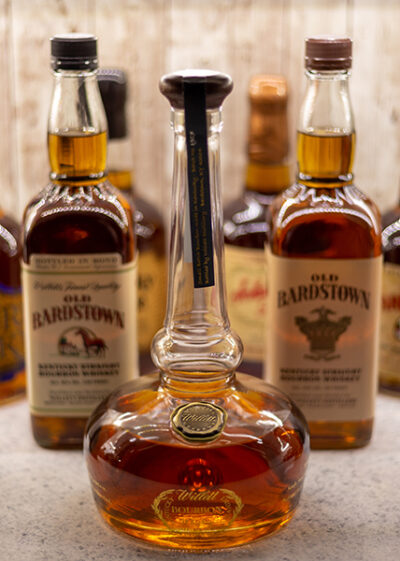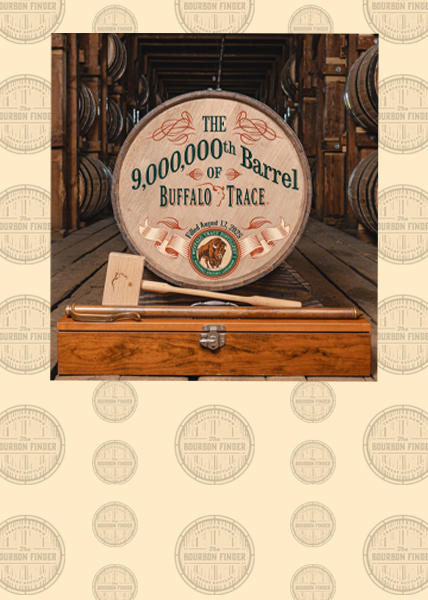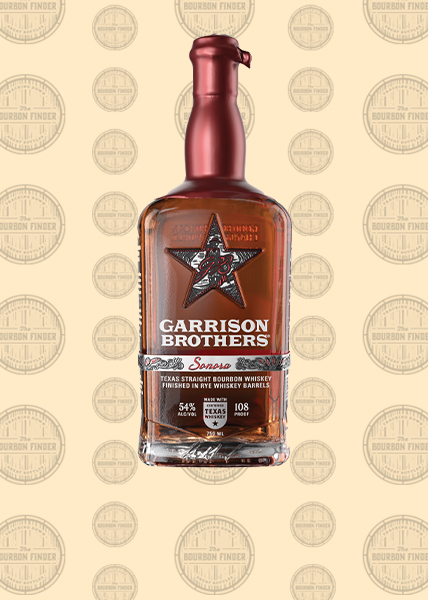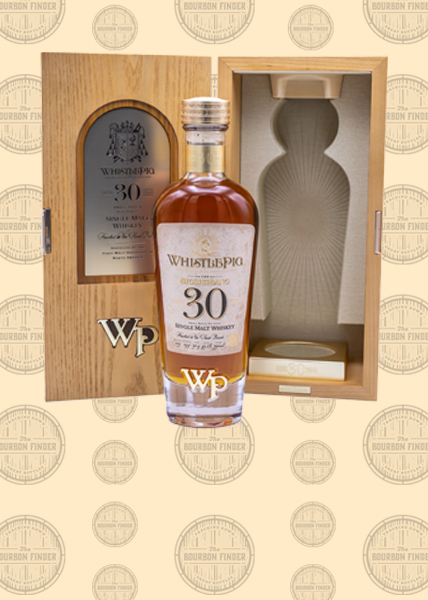Willett Porfolio Roundup
There are certain brands within this wild whiskey world that garner a level of attention most distillers can only dream of. Willett happens to be one of those brands. Their iconic purple-topped bottles of Willett Family Estate Bourbon are among the most coveted items by bourbon fanatics. The days of visiting the gift shop to score a high end bottle of the sacred bourbon (or rye) may have been replaced now by visiting The Bar at Willett for some outstanding fare, but the legend lives on with not only the WFE offerings, but in the rest of their portfolio as well. Let’s take a look.

Dating back to 1936, Willett has a rich history in the American whiskey world, and it shares not only it’s famed products but also it’s family roots with us today. 1792 marked the year when William Willett Jr. moved to Nelson County, Kentucky–which just so happens to be the same year Kentucky became a State. We could take a deeper dive into that history, but that is probably best left to actual historians. Below is a quote on the topic of their history from the Willett Website:
In the spring of 1936, the family breaks ground on the distillery. Willett Distillery was erected on the family’s farm, three short years after the repeal of prohibition.
-kentuckybourbonwhiskey.com
So what exactly is in the Willett Portfolio? This was a question that gnawed at the back of my mind. Having only had access to Willett Pot Still (and having to travel one State to the South for that) I had been wanting to scratch the proverbial itch to try more of Willett’s offerings since the first time I popped the top one on of those attention-grabbing bottles. Digging deeper I found there are a handful of brands in the lineup that I needed to try: Old Bardstown, Kentucky Vintage, Pure Kentucky, Rowan’s Creel just to name a few. That settled it–I went on the prowl.
After finding Rowan’s Creek, Noah’s Mill, and Old Bardstown (bottled in bond) through a friend I peeled back a few more layers. Not only are there products in the Willett lineup I hadn’t heard of, there are even different labels within each brand I needed to track down. Things like Old Bardstown 90 proof, Old Bardstown Estate Bottled, etc.. The list went on, and so did the hunt. As of this post I have not yet found Johnny Drum Black Label; however, I’ve sourced enough of the Willett products that I am ready to review them en masse.
I’ve been wanting to cruise through the entirety of the Willett lineup for quite some time, and providing scores for each of them in one big article seems to be a fun way to share thoughts on all of these bottles.
I want to mention that–for me–there is a very distinctive Willett note which makes it very tough to have their products in a blind lineup. If you watched The Bourbon Finder & Bourbon for the Masses Blind Tasting (rye) you’ll notice how WFE rye was evident to me right out of the gate. Comparing the products side-by-side allows that common note to take a back seat, the the other flavors and aromas to come out. Let’s take a look!

Willett Portfolio Review (standard offerings)
The common note I get in Willett products is maraschino. Not like the bright red cocktail fruits you read about in The Bourbon Finder’s Food Fight, but the actual Marasca flavor you will find in Luxardo liqueur. That liqueur is made with not just the cherries, but also leaves and stems from the plant. It brings about a truly unique note that can come across as fruity, herbal, medicinal, or any of the above. I’ll describe the note as it hits me from each different product below.
(these were rated over multiple tastings on different dates due to sheer amount of products and to wrap my mind around all of the notes)
Willett Pot Still Reserve: The fruitier side of the maraschino comes up front, and mixes with dark bitter orange. It reminds me of a cooking orange, or maybe some orange peel with a touch of brown sugar. It’s a bit sweet and a bit bitter all at the same time. A bit of oak and caramel mix in here and make for a pretty tasty pour. I dig the finish. This isn’t the most complex whiskey but it’s balanced, and brings out uncommon notes.
Old Bardstown (bottled in bond): A fruity offering that leans a little toward grapes on the vine. The fruit is mixing with spice that works pretty well. There’s a little heat with this, although it isn’t out of line. Being BiB it’s obviously four years old, and I doubt it was aged much beyond that. No flaws at all in this, it just doesn’t strike me as having a ton of depth. This is certainly a killer budget pour bringing a good amount of fruit with it.
Old Bardstown (90 proof): Very balanced, but pretty light overall. I do notice some vanilla in this pour. It’s also spicy like it’s bottled-in-bond neighbor, but doesn’t carry itself in as bold a way. All in all it’s a decent pour, albeit on the simple side.
Old Bardstown (estate bottled): It’s pretty interesting how these products flying the Old Bardstown flag are so different while still being roughly the same. A noticeably softer mouthfeel and a deeper band of light caramel with a touch of butter runs through this. This one touches a bit more of that orange peel note that I find in the Pot Still brand, and that caramel works with some oak. I dig it.
Johnny Drum (private stock): 101 Proof and wax topped, Johnny Drum pours a little oily in the glass. A few swirls open up a ton of spice for me. I dig the oak and some sweetness, maybe brown sugar, but then it’s a big old cinnamon roll. This could very easily become a favorite autumn whiskey, or even Christmas whiskey. The amount of baking spices and big toasty cinnamon are something to talk about.
Johnny Drum (black label): The budget-conscious low proof sipper. While being about the cheapest offering in the family, this was the hardest to track down. Once a somewhat available bottle was relegated to gift-shop only before apparently being discontinued (or created is such low quantity as to make it indiscernible if it exists at all). Flavor and rating-wise this is falling directly in line behind Old Bardstown for me in terms of flavor and overall profile. Kind of a shame, really, because the big spice layers in Johnny Drum Private Stock are all but vacant in this lower proof offering.
Willett Family Estate Rye (4yr): Medicinal and herbal all at the same time. There’s a good amount of spice and fruit mixing in. All in all this is complex enough on the nose that I feel like ten minutes of nosing the glass wouldn’t do it enough justice. A really unique rye, especially in the sense that I don’t pick up a ton of rye until the back. The finish shows the rye spice and it goes on and on. One of the highest proof of our lineup (this bottle coming in at 110.8 proof), and combining those extra proof points with the complexity of the spicy fruits makes for sorcery on the finish.
Rowan’s Creek: As I sip this and work through the flavors I keep coming back to the odd proof. It’s 50.05% ABV (100.1) proof and I just can’t quite wrap my mind around why? This is nice, and leans more toward the fruity side. I’m not picking up a ton of oak or any “dark” flavors I catch in some of the other products in the lineup. There’s a bit of a sweet tea note going on, and something light and reminiscent of toffee.
Noah’s Mill: This may very well make for a great flagship product. There’s a good amount going on in the glass between floral and sweet notes, but it’s balanced. The mouthfeel is good. Doesn’t strike me as hot, even with a proof of 114.3. It’s working on being dark and fruity while still having a light nose…pretty interesting overall. I’m also getting some of that sweet tea on this product but it’s working in tandem with the other notes in a way that just works.
Kentucky Vintage: If the classic “Willett note” was removed, I feel like this could be labeled as a generic bourbon. I’m unsure if it’s the lower proof (90) that is making it seem generic or not. There isn’t really a big driving flavor in any one direction. There’s vanilla and a bit of caramel in there but I can’t help but pick up the floral maraschino as the only interesting characteristic. It isn’t flawed, it’s just very middle of the road.
Pure Kentucky XO: The last of the wax-topped bottles I opened in this lineup, and if I had to pick a favorite of those four it would come down to a toe-to-toe duel between Pure Kentucky XO and Johnny Drum. Where the Johnny Drum is big and spicy, the Pure Kentucky is sweet and elegant. Richer flavors that come through in a softer way and slowly take turns showing up. Something like butterscotch or maybe even English toffee like a Heath bar. I find myself relating bourbons to candy bars too often…I may need to work on that. Moving on! This is a good pour, and I am really curious about the age of this one. Sitting at 107 proof (a personal favorite of mine) and having a rich flavor, I’m quite happy with this.
Bourbon Finder Grades:
- Willett Pot Still: B-
- Old Bardstown (bottled in bond): C+
- Old Bardstown (90 proof): C
- Old Bardstown (estate bottled): B-
- Johnny Drum (private stock): B
- Johnny Drum (black label): C-
- Willett Family Estate Rye (4 year): B
- Rowan’s Creek: C
- Noah’s Mill: B
- Kentucky Vintage: C-
- Pure Kentucky XO: B
Final thoughts…
This particular article was something I had been considering for quite some time. It actually helped as a driving factor to get me to source all of the bottles above. In wanting to try as many things from the Willett lineup as possible, I wound up collecting a number of bottles and getting to experience how the profiles vary. All in all this was a really fun exercise in science…ok, fine, it was just a fun bourbon geek topic! If you have a favorite in the Willett lineup, let us know in the comments. Thanks for reading.

Our grading system: As mentioned in our About Us page, we’re excited to share bourbon with our friends, family, and readers. There are enough critics, cynics, and curmudgeons in the whiskey world as it is. Our goal is to foster the bourbon community in a positive way by bringing fun–and entertaining content whenever possible– as such, we decided that applying precise scores to whiskey was simply too serious for us (and didn’t accurately showcase the variability in taste from day to day). We use a simple grade school system to apply a grade to the whiskeys we review because we feel it is indicative of the whiskey’s grade for us on that particular day. A grade of a “B” today may very well be a “B+” or even a “B-” on another day, so rather than focusing on a precise score, we are just sharing our overall grade of that pour for that one tasting. Pour a bit and enjoy, friends, these are the good old days of whiskey!











Leave a Reply